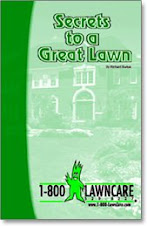
The previous post gives homeowners insight to proper irrigation, most follow the basic procedures laid out by us and others in the industry, applying those watering procedures helps, nevertheless, we still find customers who do not water enough, this is a problem with our industry. I will list some comments we hear regularly:
"My system is set and I water regularly, there is no way I don't water enough!"
We get this comment all the time, only to audit the system, finding very little pressure at some heads and more at others, when measuring water output their system output falls short of weekly needs, some heads pointing opposite of target area and while others don't cover at all, the wrong head for the job or pop ups where there should be rotors and vice-versa. Also, most customers will water 10-15 minutes each zone twice weekly, in reality this is just not enough water when it gets hot.
"I water till I see run-off so I know my yard gets watered enough."
This comment is perplexing to me, run-off can start the minute you water, ground so hard water beads up and rushes to the path of least resistance. Just because you see run-off does not mean you have watered enough, reality is, you will see a ton of run-off when watering properly.
"I water my yard myself so I know its watered properly!"
You can water your yard yourself and do an adequate job, however, the odds are you will either not water enough, water one area heavy and not the other, or tire of moving a manual sprinkler throughout the yard. This may be a true statement,but can you really keep this process up?
"I water every other day, water is not the issue with my lawn!"
So often we hear customers say this, yet when we survey the yard, we can barely get the soil probe into the ground, hard as a brick, yet we can go to a different part of the yard, say the back and soft as pie, so why is this? Could be so many reasons, soil not as good in that area, sprinkler head doesn't put out as much, homeowner sees his system come on as he's leaving for work and assumes his yard is being water properly. All the while the rotor is not covering the area of his yard which illicit the most complaints.
"Its been raining, So I know my yard has been watered."
This example is very common, yes it may have rained, even if you keep a rain gauge in your garden and you know its rained two inches, how long does that rain last? Is that enough for a month? Rain is great but just because it rained one day last week, that's not enough to sustain a healthy lawn.
The comments above are merely examples to express to those who read this, your watering methods may not be as good as you perceive them to be, this is no hack on you personally, just part of customer service and helping to educate those who care about their lawn. All to often we investigate why a yard looks bad and 7 times out of 10, its a watering issue. Please consult this blog for additional information like the previous mentioned post or the Texas A&M watering guidelines PDF located on the sidebar of this blog, or call LawnTech if you have any questions @ 972-346-2696



















